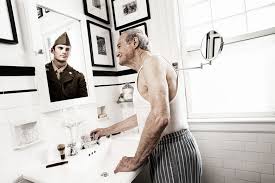What Memories Are Made Of
Engaging in reminiscence can powerfully impact the wellbeing of a person living with dementia, as it stimulates communication and helps to trigger their existing memories. Reminiscing can also assist in the creation of new memories, as discussing life history inspires new conversations that can be shared with caregivers and loved ones.
People living with dementia cope with high levels of stress every day. This, understandably, often makes them defensive, guarded and difficult for others to approach. Reminiscent activities help a person coping with memory loss to build confidence as they recognise their belongings. This allows them to feel less stress, making them less aggressive and able to live happier lives.
The information gathered though reminiscence also provides caregivers, family members and loved ones with valuable insight into an individuals history. This information can be used to start conversations or to help a person with dementia feel more at ease when they feel distressed.
This is incredibly useful as people living with dementia struggle to create or retain new memories and might still remember themselves to be of a younger age. Startling themselves when they look into a mirror and see an elderly face staring back at them.
It is for these reasons that it is extremely beneficial for a person living with dementia, in addition to those around them, to engage in reminiscence. It prevents the discomfort that accompanies confusion, making life more enjoyable for everyone.
Not sure where to start? One way to partake in reminiscent activities is through the use of a Memory Box. A Memory Box is a secure, personal display cabinet for the safe-keeping of personal memorabilia.
From family photos, to holiday souvenirs to favourite recipes, a Memory Box holds recognisable keepsakes that help trigger the existing memories of those coping with memory loss. They also assist in the creation of new memories as the boxes contents inspires conversations with caregivers, family members and loved ones.
Memory Boxes are used extensively in care homes, typically placed outside a resident’s room. These extraordinary products are a practical and attractive tool that provide numerous benefits including:
1. Excellent aids to orientation.
2. Stimulating conversational interaction.
3. Providing care givers with valuable insight into an individual’s life history.
4. Reinforcing the confidence of the user, as they are able to recognise their items.
5. Creating an attractive point of interest.
A nurse from Sandridge House speaks about her experience with Memory Boxes stating, “We have had great response from the Service User's themselves as well as their relatives. I am in the Activities Department and often use the boxes as a reminiscing aid as well as the Service User's often looking at them of their own accord when they enter or leave their bedrooms. They are a great way to display pictures from the past or present and have enough room in them to place any special nik-naks or treasured possessions.â€
Another nurse speaks about her patient’s experience with Memory Boxes stating, “Joan’s Memory Box empowered her to become independent again. Now she can find her own room she smiles again and is no longer angry, frightened or anxious. It’s been a huge boost to her confidence, dignity and well-being.†How amazing is that?
Memory Care also offer an internally illuminated Memory Box option which ensures the boxes contents can always be seen, even at night time!
More information on the Memory Boxes can be found on our website.





